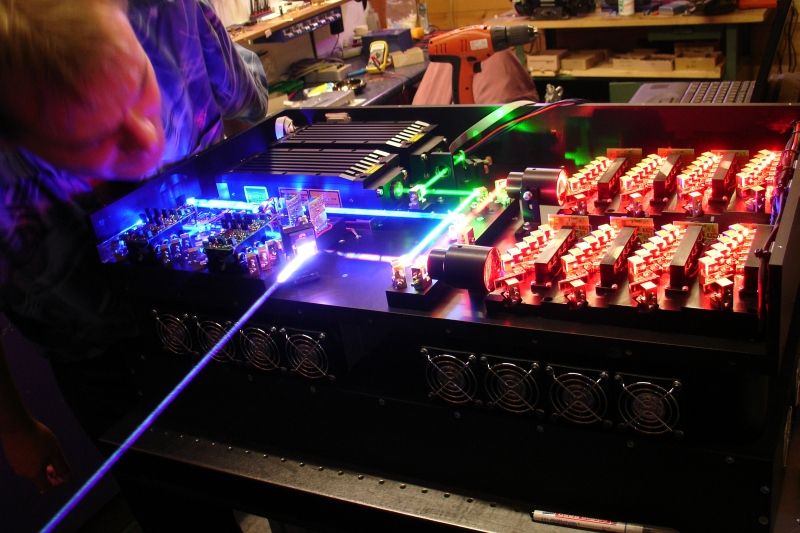The prism trick probably doesn't work, prism have a low dispersion, so the setup would be huge even to combine 2 wavelengths. Efficient gratings would be worth an experiment. It would still make a huge setup, but you might be able to combine more than 2 beams.
In the end the wavelength trick is probably not worth the trouble.
That's just quitter talk.
JK. I was imagining 10 diodes with about 1-2nm difference between each. Prisms would work but you'd probably need several of them, and it would help if they were made out of diamond. Of course the beams would need to start out close together and the angular change from one beam to the next would have to be small and precise - then the prism(s) wound only need to apply a small amount of shift to bring them together. Using gratings is probably a better idea. As you noted, the setup would probably need to be quite large.
The concept is very similar to chirped pulse amplification except that it's spatial rather than temporal compression.
The more I think about it, the more I'm liking this idea. The technique could be applied to any pre-existing knife-edge setup to improve beam quality. Just add temperature gradient and prisms/gratings, and adjust the convergence-point distance toward the near-field (away from infinity).
It may not be perfect, but any temperature/spectral gradient could be leveraged to compress the size of the beam (along the axis of the gradient), and at least make it smaller. Think of it more as beam-shaping a combined beam rather than beam-combining.
Last edited:




